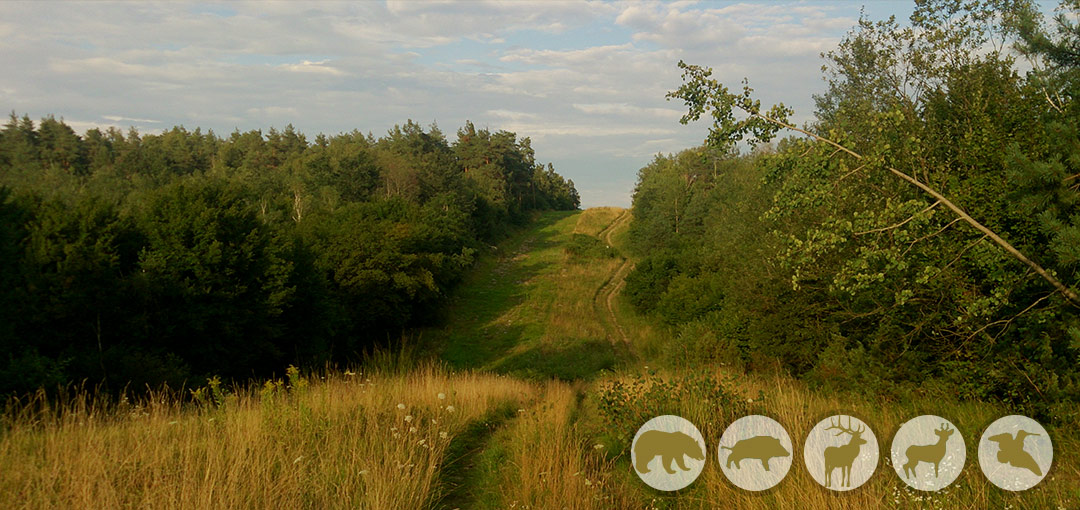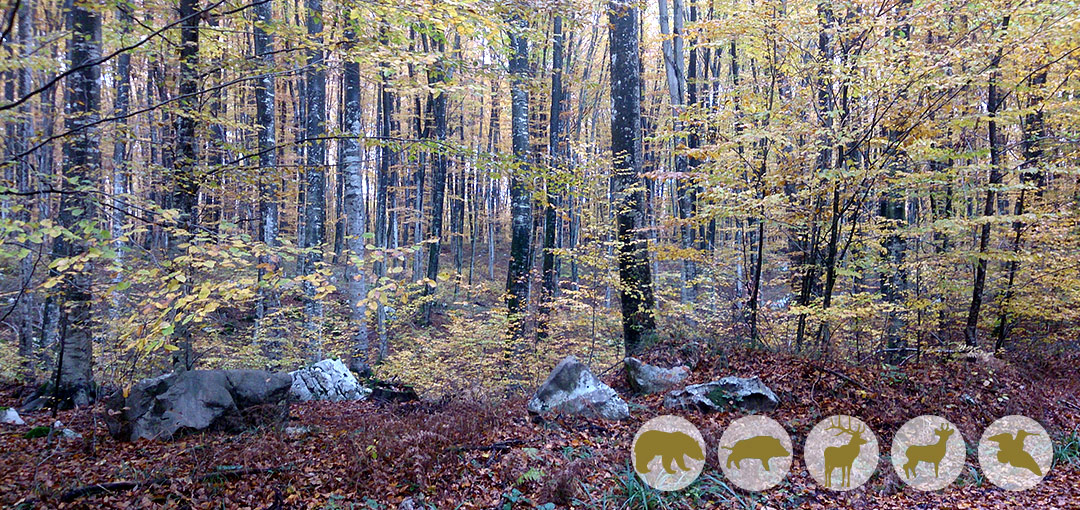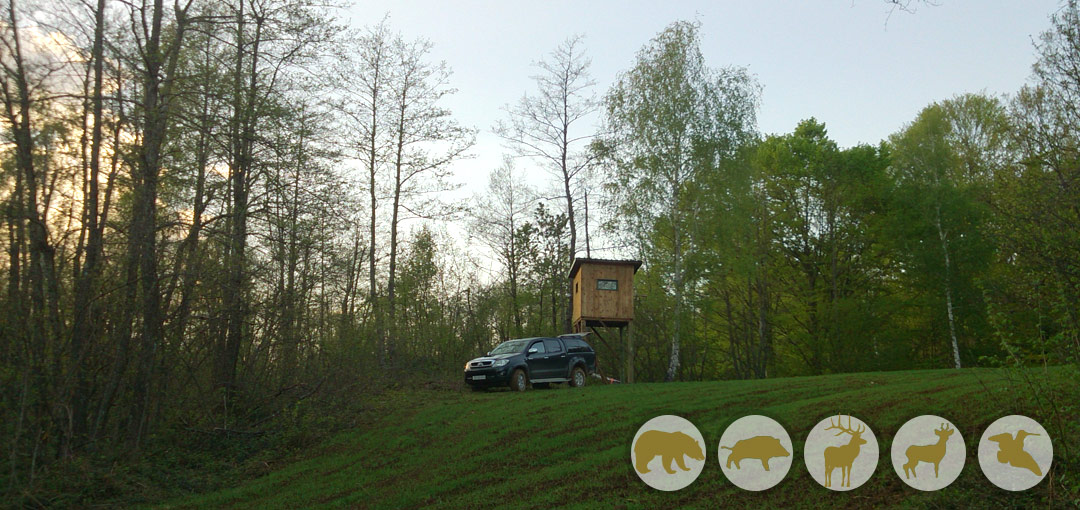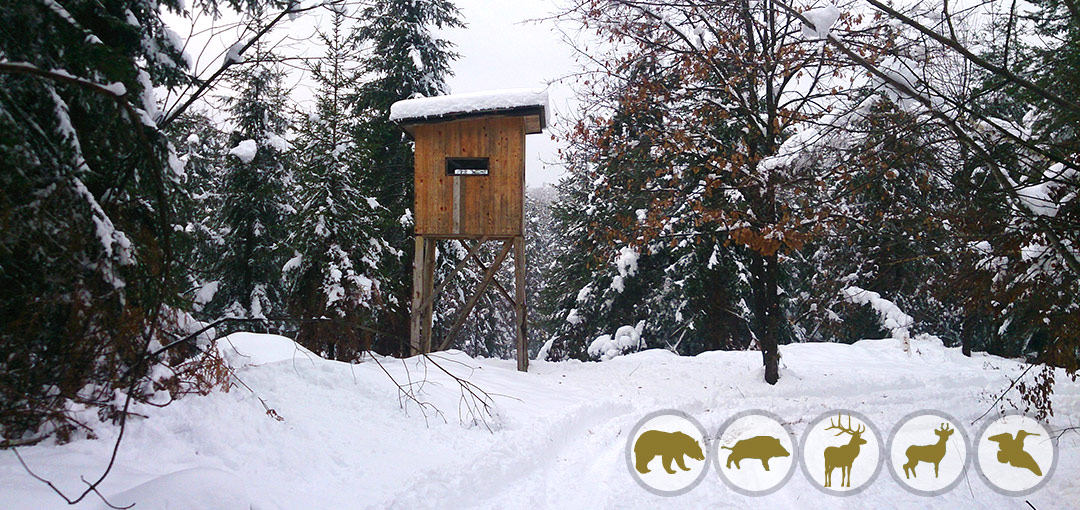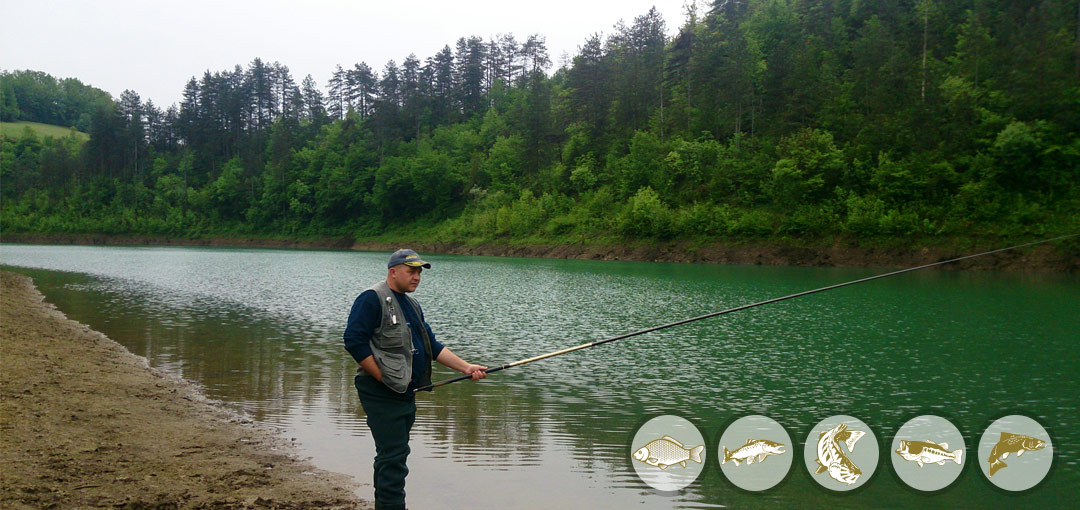Brown trout
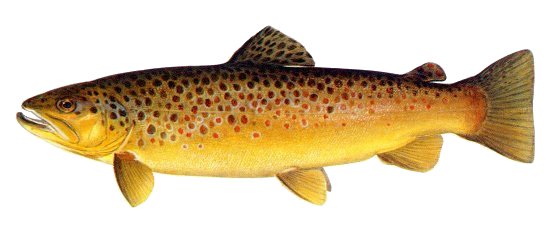 Brown trout (Salmo trutta m. fario Linnaeus, 1758.) is the closest relative of saltwater trout. Usually it reaches 20 to 40 cm in length and weights up to 1 kilo, but individuals were caught as big as 50 cm and weighting 5 to 7 kilos! Brown trout lives in oxygen-rich cold waters of mountain rivers and streams.
Brown trout (Salmo trutta m. fario Linnaeus, 1758.) is the closest relative of saltwater trout. Usually it reaches 20 to 40 cm in length and weights up to 1 kilo, but individuals were caught as big as 50 cm and weighting 5 to 7 kilos! Brown trout lives in oxygen-rich cold waters of mountain rivers and streams.
Trout fishing is exceptionally interesting because it requires the maximum effort, ingenuity and experience. Trout is caught in several ways: with artificial fly, fishing plastic water balls („wasserkugle“), with rod and reel or small rotating butterfly lure. All other ways of catching trout are considered poaching. The best time of the year for catching brown trout is summer and fall – from the middle of July to October. Trout is best caught on a cloudy day or just after mild rain. Trout meat is considered the finest of all freshwater fish.
Zander
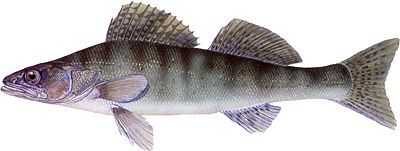 Zander (Sander lucioperca; Stizostedion lucioperca) is a freshwater fish from the Percidae family. Zander lives in slow and murky waters with moderate temperature. The species particularly likes rocky or gravel river beds with many obstacles and terrain variations, up to 4 meters in depth. If the water is rising, zander approaches the banks of the river and can be seen in shallow water, up to two meters in depth.
Zander (Sander lucioperca; Stizostedion lucioperca) is a freshwater fish from the Percidae family. Zander lives in slow and murky waters with moderate temperature. The species particularly likes rocky or gravel river beds with many obstacles and terrain variations, up to 4 meters in depth. If the water is rising, zander approaches the banks of the river and can be seen in shallow water, up to two meters in depth.
Zander is best caught in early spring and from June to November, when frosts start. Humid weather, with moderate temperatures and mists, is the best one gor fishing. If the water is high, zander dwells in deeper waters near the banks, among submerged willows. If it is allowed, zander can be caught in clear waters during the night. Dead fishes are the best bait for zander throughout year. Any species of fish can be used to lure zander, but the best are common roach, ruffe, European eel and European perch. The best tackle for angling zander is 3 to 3.5 meters long tough carbon rod, with a fine nylon line that can load up to 3.6 kilos. If there are lots of flooded stumps, a firmer line can be used. Hooks the size of 8 or 10 are ideal for zander fishing. Zander can be caught with lures that look just like its natural food. If you fish in the fall season, use bigger lures.
Common carp
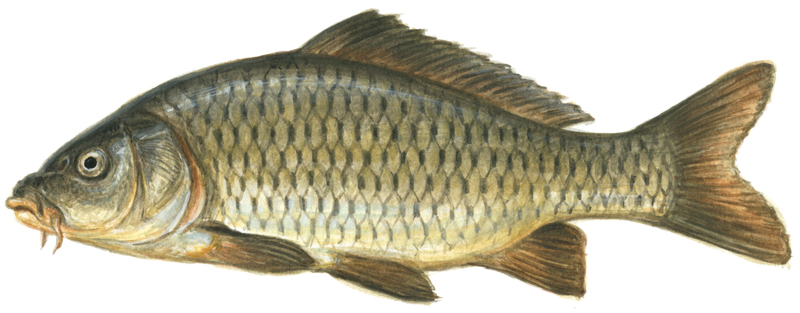 Common carp (Cyprinus carpio) is a fish of the Cyprinidae family. Carp can vary on colour, according to its environment: from white gold to brown. Carp likes slow-flowing waters and lakes and can be diurnal and nocturnal. If the water is cold, common carp limit their movements and save energy. Common carp can grow up to 1 meter in length, and can live up to 30 years! Specimens weighting more than 20 kilos have also been caught.
Common carp (Cyprinus carpio) is a fish of the Cyprinidae family. Carp can vary on colour, according to its environment: from white gold to brown. Carp likes slow-flowing waters and lakes and can be diurnal and nocturnal. If the water is cold, common carp limit their movements and save energy. Common carp can grow up to 1 meter in length, and can live up to 30 years! Specimens weighting more than 20 kilos have also been caught.
Common carp is very careful, skilled, tough and resistant – it can survive quite a long time when out of water. It is caught in many different ways and with different lures (worms, maggots, bread, polenta, corn...). The best time of day for fishing is early morning or evening, when schools of fish are searching for food. The best months for fishing are summer ones – from July to October. Common carp prefers quiet and deep places in lakes and rivers. During hot days it retreats in the shade or under aquatic plants just below surface.
As the common carp remembers where the food is distributed, fishers usually lure carp with food several days before fishing. Its meat is tasty but can be greasy or have a distinct mud smell. In that case, common carp can be submerged in clear water, and the smell disappears.
Northern pike
 Northern pike (Esox lucius) is a freshwater fish of the Esocidae family. Its body is strong and slender - pikes are known for their speed and carnivorous ways. Northern pike is a well known fish that mostly lives in slow-flowing waters, ponds and backwaters. The pike hides among aquatic vegetation and submerged logs where it lurks for small fish. In winter and spring it hunts in the late afternoon and in the summer with nightfall. When it hunts, it approaches the shallows in search for small fishes.
Northern pike (Esox lucius) is a freshwater fish of the Esocidae family. Its body is strong and slender - pikes are known for their speed and carnivorous ways. Northern pike is a well known fish that mostly lives in slow-flowing waters, ponds and backwaters. The pike hides among aquatic vegetation and submerged logs where it lurks for small fish. In winter and spring it hunts in the late afternoon and in the summer with nightfall. When it hunts, it approaches the shallows in search for small fishes.
It is caught with lures that should be a bit bigger (10 to 12 cm). Yellow lures are the best for clear waters, and silver-whites for murky waters. It can be also lured with meps butterfly (size 5 or 6) or lures that look like braid or tail. Nylon line should be strong because pikes are known for their fierceness. Thin steel wire can also be used, as it is more hardy.
Marble trout
 Marble trout (lat. Salmo marmoratus) is a freshwater species of fish of the Salmonidae family, and also one of the biggest in the family. It can grow up to 140 cm in length and weight up to 30 kilos. Marble trout inhabits clear, oxygen-rich waters of the streams and fast flowing rivers. It mostly dwells in whirlpools and eddies and hides among underwater rocks.
Marble trout (lat. Salmo marmoratus) is a freshwater species of fish of the Salmonidae family, and also one of the biggest in the family. It can grow up to 140 cm in length and weight up to 30 kilos. Marble trout inhabits clear, oxygen-rich waters of the streams and fast flowing rivers. It mostly dwells in whirlpools and eddies and hides among underwater rocks.
The best time of the year for fishing marbled trout is winter, in the bleak weather or during mild snowfall. While trout can be caught with a normal rod and reel, fly fishing is a distinctive method developed primarily for trout. It is caught with strong and sturdy tackle and big lures (up to 12 cm). Great results can be achieved with braids (copf). As soon as the resistance is felt, a strong countermove should be given because the hook won't pin easily. Trout should not be caught on high riversides or inaccessible places.
Chub
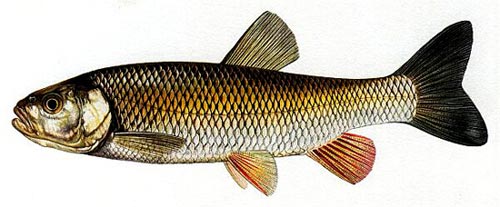 The chub (Squalius cephalus) is a freshwater species of the Cyprinidae family. The chub lives in flowing rivers, streams and lakes of moderate temperature (fresh but not cold). The chub is an omnivore and feeds on everything it can find – larvae, insects, fruits, moss, organic waste, small fishes... The chub particularly likes cheese so the lure is often sprayed with its aroma.
The chub (Squalius cephalus) is a freshwater species of the Cyprinidae family. The chub lives in flowing rivers, streams and lakes of moderate temperature (fresh but not cold). The chub is an omnivore and feeds on everything it can find – larvae, insects, fruits, moss, organic waste, small fishes... The chub particularly likes cheese so the lure is often sprayed with its aroma.
Fishing tackle does not need to be that strong and hardy, the universal one should be enough. The chub likes lures that give off higher frequencies and louder vibrations, i.e. lures that totter, sway, trash, rotate and make sound by vibrating underwater.
Common barbel
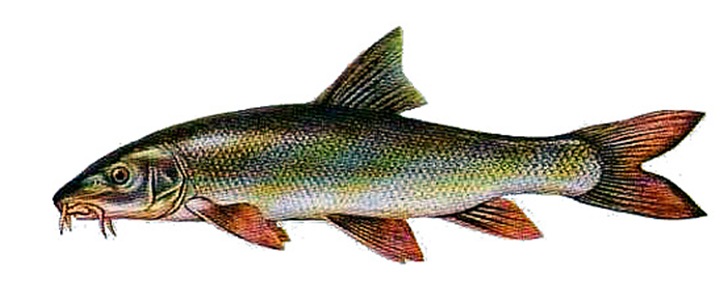 Common barbel (Barbus barbus) inhabits all water of central and west Europe. It can be found in the main flow of the river, on rock beds. It is mostly nocturnal but can be seen feeding during day - typically after storms, when it collects insects from the surface. Common barbel usually collects food from the river bottom, where it turns rocks over in search for small animals. Common barbel moves in schools that are usually made from fish of different ages and sizes
Common barbel (Barbus barbus) inhabits all water of central and west Europe. It can be found in the main flow of the river, on rock beds. It is mostly nocturnal but can be seen feeding during day - typically after storms, when it collects insects from the surface. Common barbel usually collects food from the river bottom, where it turns rocks over in search for small animals. Common barbel moves in schools that are usually made from fish of different ages and sizes
Common barbel is fished throughout the year. In winter they fall into stupor and move rarely, and in spring time they migrate towards colder and more oxygenize waters to mate. During summer they migrate back into their old habitat and should be searched for in shallower parts of the river where water swirls (floodgates, dams). Fall season is the best season for deep water fishing. Common barbel is usually fished after during dusk and in the nighttime or the day after rainfall, when the water is murky. Common barbel is caught with a lure lowered to the bottom with a sliding sinker. The lure is slowly pulled upstream and yanked from time to time.





